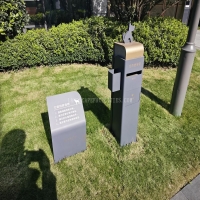Welcome to the website for landscape facilities products and knowledge.
How does the bin’s design accommodate the needs of waste audit programs?
Waste audit programs are essential for improving recycling rates and reducing landfill waste. A well-designed bin plays a crucial role in facilitating these audits by ensuring accurate waste segregation and data collection. Modern bins incorporate features like color-coding, clear labeling, and compartmentalization to streamline sorting processes.
For instance, bins with separate compartments for recyclables, organic waste, and general trash simplify waste categorization during audits. Transparent or semi-transparent designs allow auditors to quickly assess contents without manual sorting, saving time and improving accuracy. Additionally, smart bins equipped with sensors can track waste composition in real time, providing valuable insights for waste reduction strategies.
Ergonomic designs, such as hands-free pedal bins or touchless lids, also promote hygiene and user compliance, ensuring that waste is disposed of correctly. By aligning bin functionality with waste audit requirements, municipalities and businesses can optimize recycling efforts and move closer to sustainability goals.
Ultimately, thoughtful bin design not only supports waste audit programs but also encourages public participation in responsible waste management, creating a cleaner and greener future.
Related search:

Recommendation
Outdoor cat and dog feces trash can; Community pet trash can; Metal multi-color design